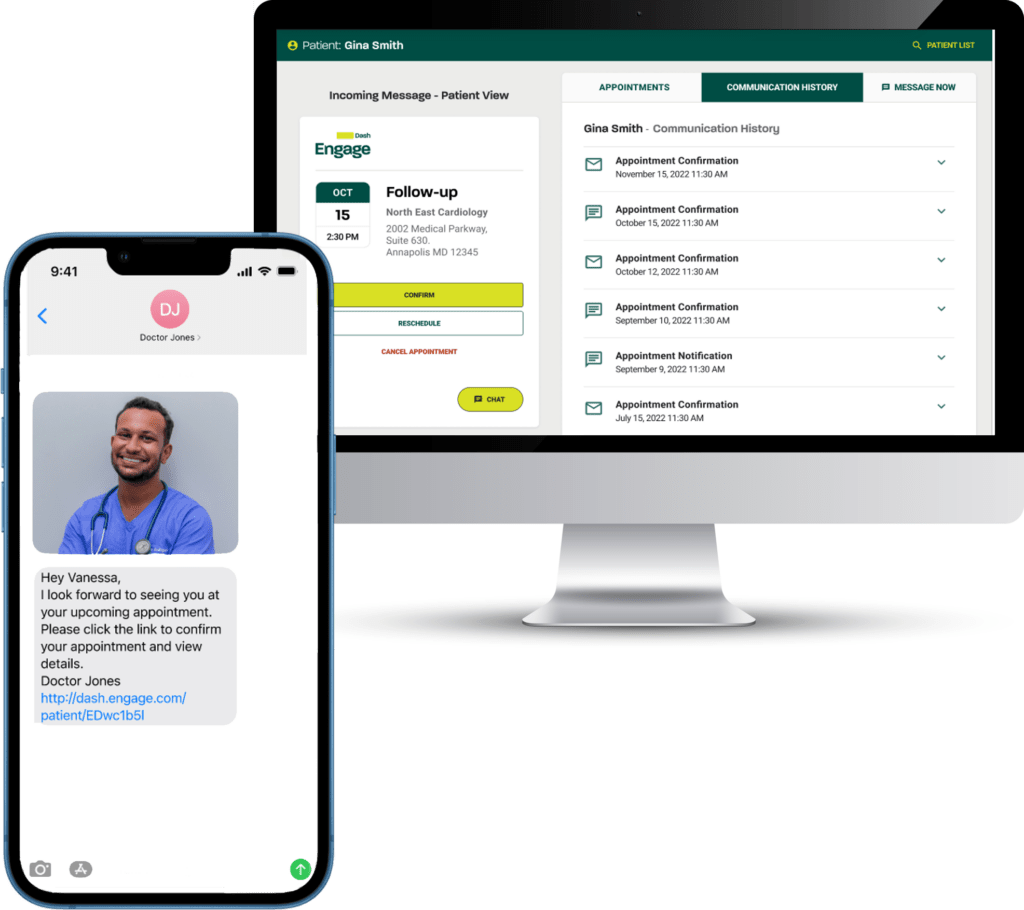“Patient No-shows”—the health industry term for patients who don’t show up after they’ve scheduled an appointment—are a growing industry challenge. The average patient no-show rate is 27%. This matters quite a bit at a time when a new patient needs an average of 26 days to get an appointment with a primary care provider, wait times are up 24% since 2004, and the healthcare industry is projected to see a shortage of up to 124,000 physicians in the next decade.
No-shows not only lead to the loss of anticipated revenue, they pose risk to the quality of healthcare service and patient outcomes. Patients who fail to show up for their appointments often require more expensive emergency care later and these higher costs get factored into healthcare costs for everyone else.
As organizations tackle the issue of no-shows more earnestly than ever, it’s important to understand who is most likely to no-show for an appointment and the best ways to drive engagement, satisfaction and – ultimately – better clinical and operational outcomes for both patients and providers.
What Not to Do to Avoid Patient No-Shows
As many healthcare organizations try to find ways to reduce no-shows, many find that some common strategies for reducing no-shows simply don’t work:
- Charging Patients for Missed Appointments. Charging a fee creates additional work for staff and fails to address many of the underlying reasons that patients miss appointments. Medicaid doesn’t allow medical practices to charge patients for missed appointments in some states.
- Double Booking Appointments. Double booking appointments is betting on the probability that a patient won’t show up for their appointment, and it’s a recipe for unhappy patients. When they do show up as scheduled, the results are long wait times, frustrated patients and minimal time with a provider—all of which put the reputation of the organization in jeopardy and require double the work for staff.
Common Misconceptions:
In addition to frequently-tried but unsuccessful no-show solutions, common misconceptions around patient no-shows can get in the way of organizational successes and block them from establishing trust with patients. A few common misconceptions about no-shows include:
- Every appointment has equal likelihood for a “no-show.” This is simply not true. For instance, patients are more likely to no-show for ongoing/preventative care appointments vs. a chemo appointment. Depending on your organization type, and varying appointment types with different sorts of patients, your strategy/approach to no-shows must vary to address this disparity.
- Patients no-show because they can’t get in touch with their doctor last-minute. If a practice is using modern tools like chat or has an easily accessible portal, this difficulty can be significantly offset and often resolved.
- There’s no way to have much insight into whether a patient will no-show or not. Demographic information and factors (i.e., how accessible their transportation is, what their work schedule allows, how crucial they perceive the appointment to be) reveal critical information about the likelihood of a patient to no-show. Automatically ID-ing these factors and flagging for a possible no-show can help you plan around them and help them get to their appointment.
What DOES Work: Effective Ways to Reduce Patient No-Shows
What does work when it comes to reducing no-shows? These initiatives can radically reduce the number of no-shows at their offices:
- Make data easily accessible. The more information your organization has available on its website (i.e. about staff, specialty expertise and the variety of services offered), the easier it is for patients to engage and feel welcome, reducing the likelihood of a no-show.
- Improve proactive education/communication to engage patients. Understand what communication methods work and why, prioritizing these outreach methods to engage patients. Automating outreach and appointment reminder systems is probably the first thing to focus on before implementing a robust chat system. It will likely produce near-immediate positive results. Be sure to track results.
- Automate health campaigns and appointment reminders. Providers who send automated campaign information and reminders tend to find greater success in getting patients to show up for scheduled appointments, and have the added benefit of reducing manual outreach by staff.
- Implement 2-way chat. Research has found that most providers (96%) are not yet utilizing automated chat, but organizations that leverage traditional communications methods with chat find that they’re able to more effectively interact with and engage patients.

Unfortunately, despite its effectiveness, many providers hesitate to onboard chat functionality. Some cite that patients have been frustrated with crude chatbot systems, however as chat technology has progressed exponentially in recent years, many providers may find themselves behind the times if they refused to consider this tool.
Historically, chat programs missing data collection and analysis functions create a clunky, duplicative system that makes patients enter information multiple times in multiple places. Or, in an effort to minimize workload, some chat tools don’t easily allow patients to find and switch to a human agent when a patient really wants to speak to an actual person.
A hybrid chat system integrates carefully planned decision trees, automated standard interactions (such as cancellations and re-scheduling), AND data and analysis functions can help patients avoid these frustrations. These systems not only provide insights and information into organizations’ existing systems to speed time to insight and engagement, but also recognize when a patient needs help from a human navigator and have a system set up to for office staff to respond quickly to patient requests that need extra guidance.
Build Revenue, Realize Efficiencies with a Centralized Scheduling Solution
Reducing no-show rates is an opportunity for medical practices to increase revenue, improve access to care, and decrease waste.
Click here to read more detail on tactics, statistics, and strategies for how to avoid no-shows at your organization through an integrated, centralized scheduling solution. To learn more about Relatient’s Dash Schedule solution, click here.